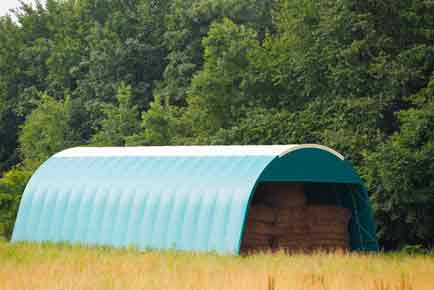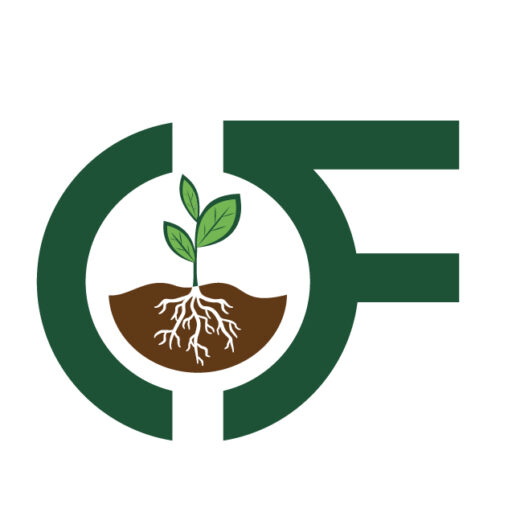Best Practices for Storing Hay to Maintain Quality and Nutrition
When it comes to feeding herbivorous animals, the quality and nutritional value of hay are of paramount importance. Hay serves as a primary source of essential nutrients for animals like horses, cows, rabbits, and guinea pigs. However, ensuring that hay retains its quality and nutritional content can be a challenge, especially when improperly stored. We’ll explore the best practices for storing hay bales to preserve its quality and maximize its nutritional benefits for your animals.

(Hay storage tent)
Why Proper Hay Storage Matters-Ohana Way
Before delving into the best practices for hay storage, it’s essential to understand why it matters. Hay is a valuable source of fiber, protein, vitamins, and minerals for herbivores. Proper storage is crucial to maintain these nutritional elements and prevent hay from deteriorating, which can lead to nutrient loss, mold growth, and even health issues in animals. Storing hay outside can lead to serious deterioration and is not recommended while the environment is uncontrollable.
1. Choose the Right Location for Hay Storage
The first step in proper hay storage is selecting an appropriate location. Ideally, the storage area should be dry, well-ventilated, and protected from direct sunlight and moisture. A well-ventilated space helps reduce the risk of mold and fungal growth, which can degrade hay quality and pose health risks to animals. Additionally, direct sunlight can cause hay to lose its nutritional value over time, so it’s essential to keep hay in a shaded area.
2. Invest in Good Quality Storage Equipment
Investing in high-quality storage equipment is a crucial aspect of preserving hay quality. There are several options to consider:
- Barns or Sheds: If you have the space and resources, storing hay in a barn or shed is an excellent choice. These structures offer protection from the elements and provide a controlled environment for hay storage. Storing hay in a garage would also work if you have the proper space.
- Hay Tarps and Covers: If a barn or shed is not available, consider using heavy-duty hay tarps or covers. These can help shield hay from rain and sun while allowing for ventilation.
- Hay Racks and Feeders: When feeding animals, using hay racks or feeders designed to keep hay off the ground can prevent contamination and spoilage.
- Pallets: Elevating hay bales off the ground using pallets or wooden platforms can help improve air circulation and reduce moisture absorption from the ground.
3. Stack Bales Properly
When stacking hay bales, it’s crucial to do so correctly to ensure optimal storage conditions. Here are some tips:
- Stack bales on their edges: Stacking hay bales on their edges rather than flat on the ground allows for better airflow between the bales. This can help prevent moisture buildup and mold growth.
- Leave space between bales: Leave a small gap between stacked bales to facilitate air circulation. Stacking bales too closely together can trap moisture and heat, increasing the risk of mold. Storing hay in a plastic container is not recommended due to not having proper airflow.
- Store bales off the ground: Whenever possible, elevate hay bales off the ground using pallets or similar platforms. This helps prevent moisture absorption from the ground, which can lead to mold and spoilage.
4. Monitor Temperature and Humidity
Maintaining proper temperature and humidity levels within the storage area is essential for hay preservation. Hay should ideally be stored in an environment with a relative humidity level below 60% to prevent mold growth. Additionally, monitoring temperature is important because excessive heat can cause hay to lose its nutritional value. Regularly check the temperature and humidity levels in your storage area and make adjustments as needed to ensure they remain within the recommended range.
5. Rotate Old and New Hay
To maintain hay quality, it’s a good practice to rotate old and new hay. Use the oldest hay first to prevent it from becoming overly dry or losing nutritional value. This rotation ensures that your animals consistently receive fresh and nutritious hay.
6. Keep Pests at Bay
Pests like rodents and insects can be a significant threat to hay quality. To deter pests, take the following measures:
- Seal entry points: Close any gaps or openings in the storage area to prevent rodents from entering.
- Use pest deterrents: Consider using natural pest deterrents like peppermint oil or mothballs to keep rodents and insects away.
- Regular inspections: Periodically inspect your hay storage area for signs of pest activity, such as droppings or nests, and take action immediately if you detect any issues.
7. Protect Against Contamination
Contaminated hay can pose health risks to animals. To minimize the risk of contamination, take these precautions:
- Keep storage areas clean: Ensure that the storage area is free from debris, old hay, or other materials that can introduce contaminants.
- Store chemicals separately: If you store chemicals or pesticides near hay, keep them in a separate area to prevent contamination.
- Inspect hay quality: Before feeding hay to animals, inspect it for any signs of mold, foreign objects, or unusual odors that may indicate contamination.
8. Consider Hay Testing
To ensure that your animals are receiving hay with the right nutritional content, consider having your hay tested. Hay testing can provide valuable information about the hay’s protein, fiber, and mineral levels. Armed with this information, you can adjust your animals’ diets as needed to meet their specific nutritional requirements.
Conclusion on Hay Storage
Proper hay storage is essential for maintaining the quality and nutritional value of this critical food source for herbivorous animals. By choosing the right location, investing in quality storage equipment, stacking bales correctly, monitoring temperature and humidity, rotating old and new hay, and implementing pest control measures, you can ensure that your animals receive the best possible hay. Protecting hay from contamination and considering hay testing can further enhance your ability to provide your animals with nutritious and high-quality forage. By following these best practices, you’ll not only save on feed costs but also contribute to the health and well-being of your beloved animals.

